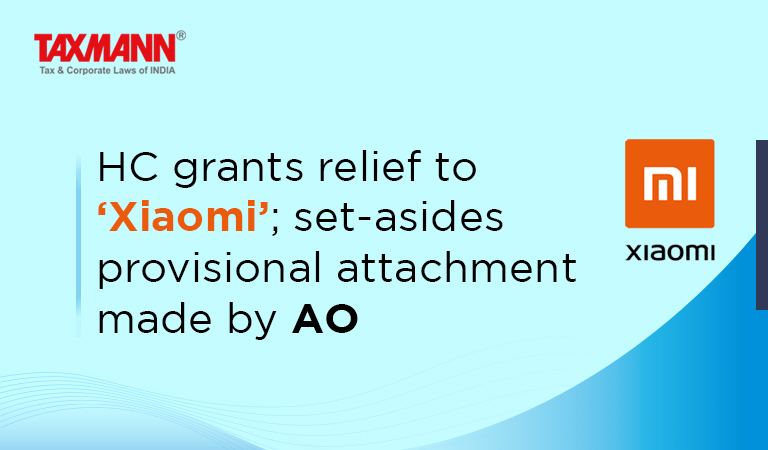HC grants relief to ‘Xiaomi’; set-asides provisional attachment made by AO
- Blog|News|Income Tax|
- 2 Min Read
- By Taxmann
- |
- Last Updated on 23 December, 2022
Case Details: Xiaomi Technology India Private Limited v. DCIT - [2022] 145 taxmann.com 501 (Karnataka)
Judiciary and Counsel Details
-
- S.R. Krishna Kumar, J.
- Sameer B.S. Rao for the Petitioner.
- M.B. Naragund, K.V. Aravind & M. Dilip, Advs. for the Respondent.
Facts of the Case
Assessee-company engaged in the business of procurement, supply, and distribution of Xiaomi products in India including mobile phones, accessories, computers, etc. It was required to pay royalty to Qualcomm and Beijing Xiaomi software company Ltd.
During the period from 2019 to March 2022, there were proceedings between the assessee and the Assessing Officer (AO) in relation to the alleged payment of income tax. Meanwhile, an order was passed by Enforcement Directorate (ED) under FEMA seizing the bank account of the assessee.
Subsequently, AO issued a notice and an order was passed, under section 281B, provisionally attaching the fixed deposits of the assessee on the ground that huge tax demands are likely to be raised upon completion of the assessment.
Aggrieved by the attachment order, the assessee filed writ petition before the Karnataka High Court.
High Court Held
The High Court held that the order passed for provisionally attaching the deposits is arbitrary reflecting a premeditated conclusion without even recording any reason for attaching the same. The doctrine of proportionality implicates the need for the purpose and the necessity of provisional attachment provides the direct nexus between the need for attachment and the purpose that the attachment secures.
A mere apprehension that huge tax demands will be raised is not a sufficient reason for passing a provisional attachment order. The order can be executed only after forming a reasonable opinion only on the tangible basis that attachment is required to secure the interest of revenue.
In the instant case, the attachment order was passed not because the assessee was likely to defeat the demand but it is based on borrowed satisfaction i.e., the opinion of AO seems to be influenced by the findings of other departments, and no independent opinion was formed.
Therefore, based on the absence of mandatory pre-conditions of provisional attachment of property, it was considered that there were no appropriate reasons to believe. Thus, considering the provisional attachment order to be arbitrary and contrary to law, the Court quashed the attachment order and allowed the assessee’s appeal.
Disclaimer: The content/information published on the website is only for general information of the user and shall not be construed as legal advice. While the Taxmann has exercised reasonable efforts to ensure the veracity of information/content published, Taxmann shall be under no liability in any manner whatsoever for incorrect information, if any.

Taxmann Publications has a dedicated in-house Research & Editorial Team. This team consists of a team of Chartered Accountants, Company Secretaries, and Lawyers. This team works under the guidance and supervision of editor-in-chief Mr Rakesh Bhargava.
The Research and Editorial Team is responsible for developing reliable and accurate content for the readers. The team follows the six-sigma approach to achieve the benchmark of zero error in its publications and research platforms. The team ensures that the following publication guidelines are thoroughly followed while developing the content:
- The statutory material is obtained only from the authorized and reliable sources
- All the latest developments in the judicial and legislative fields are covered
- Prepare the analytical write-ups on current, controversial, and important issues to help the readers to understand the concept and its implications
- Every content published by Taxmann is complete, accurate and lucid
- All evidence-based statements are supported with proper reference to Section, Circular No., Notification No. or citations
- The golden rules of grammar, style and consistency are thoroughly followed
- Font and size that’s easy to read and remain consistent across all imprint and digital publications are applied






 CA | CS | CMA
CA | CS | CMA


